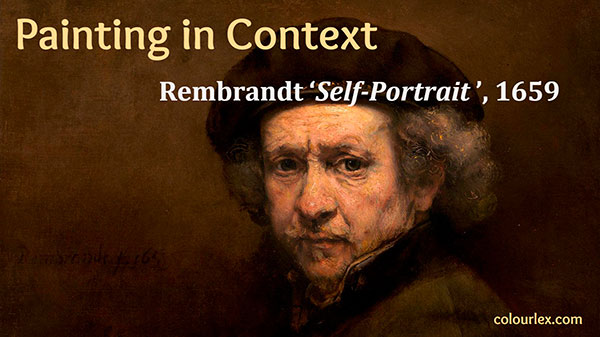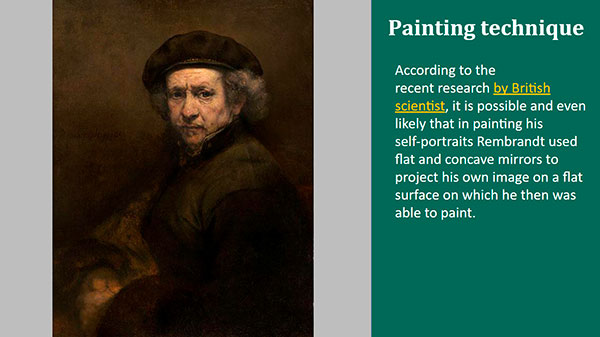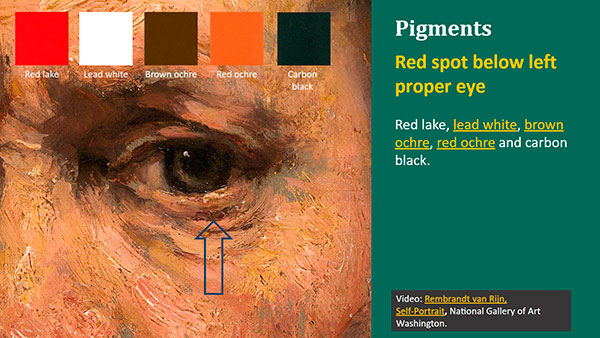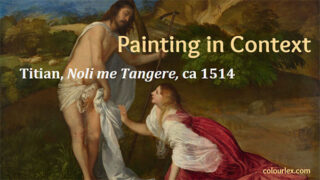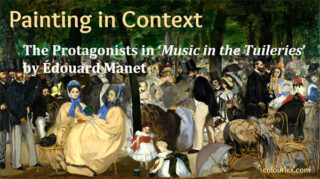Painting in Context: Rembrandt, Self-portrait, 1659
- Each presentation starts with the basic information on the painting such as its location in a museum or a gallery, the map of the location of the scene if applicable, and other pertinent details such as the history of the painting and the story depicted by the painter.
- Next, you find slides describing the painting technique of the artist and, if applicable, information on the scientific investigation of the artwork.
- The majority of the slides shows a detailed pigment analysis of the painting containing detailed views of different areas of the artwork and the pigments employed by the painter.
Rembrandt painted this self-portrait in 1659 after he had suffered financial failure despite so many years of success.
According to the recent research by a British scientist, it is possible and even likely that in painting his self-portraits Rembrandt used flat and concave mirrors to project his own image on a flat surface on which he then was able to paint.
According to the recent research by a British scientist, it is possible and even likely that in painting his self-portraits Rembrandt used flat and concave mirrors to project his own image on a flat surface on which he then was able to paint.

